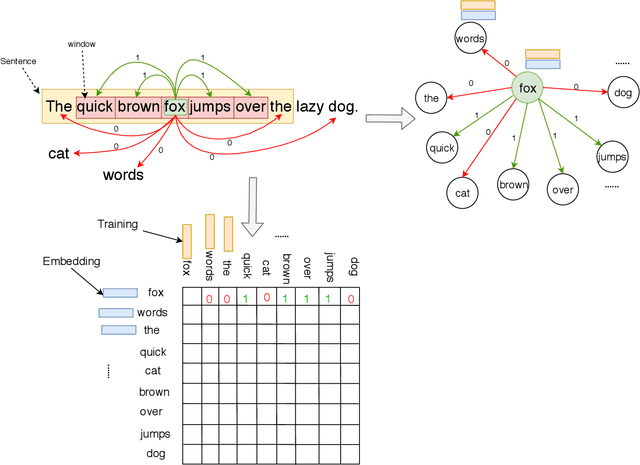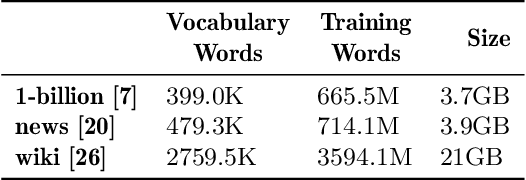Distributed Word2Vec using Graph Analytics Frameworks
Paper and Code
Sep 08, 2019



Word embeddings capture semantic and syntactic similarities of words, represented as vectors. Word2Vec is a popular implementation of word embeddings; it takes as input a large corpus of text and learns a model that maps unique words in that corpus to other contextually relevant words. After training, Word2Vec's internal vector representation of words in the corpus map unique words to a vector space, which are then used in many downstream tasks. Training these models requires significant computational resources (training time often measured in days) and is difficult to parallelize. Most word embedding training uses stochastic gradient descent (SGD), an "inherently" sequential algorithm where at each step, the processing of the current example depends on the parameters learned from the previous examples. Prior approaches to parallelizing SGD do not honor these dependencies and thus potentially suffer poor convergence. This paper introduces GraphWord2Vec, a distributedWord2Vec algorithm which formulates the Word2Vec training process as a distributed graph problem and thus leverage state-of-the-art distributed graph analytics frameworks such as D-Galois and Gemini that scale to large distributed clusters. GraphWord2Vec also demonstrates how to use model combiners to honor data dependencies in SGD and thus scale without giving up convergence. We will show that GraphWord2Vec has linear scalability up to 32 machines converging as fast as a sequential run in terms of epochs, thus reducing training time by 14x.
 Add to Chrome
Add to Chrome Add to Firefox
Add to Firefox Add to Edge
Add to Edge